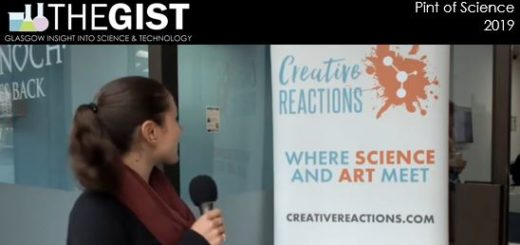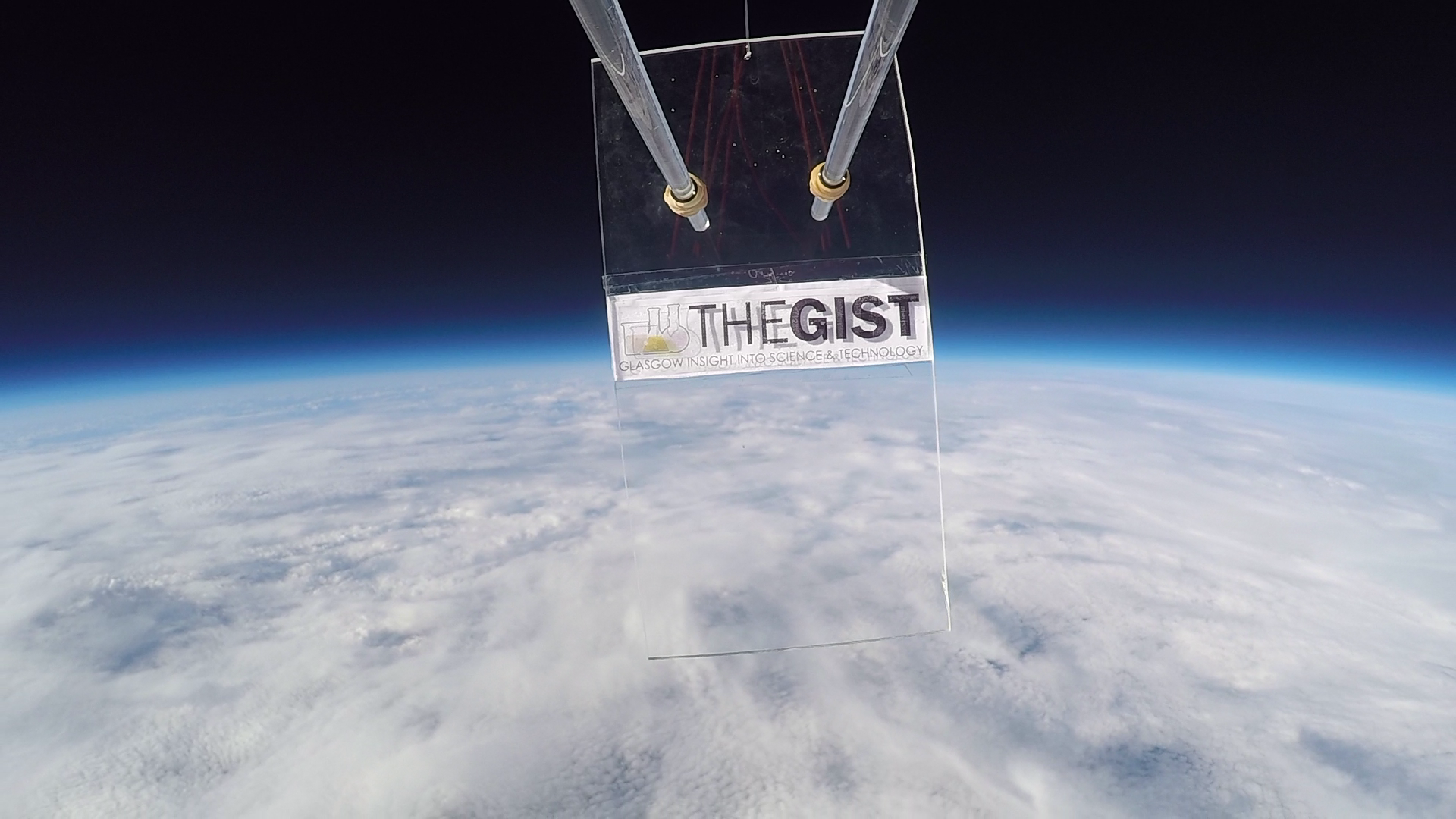Local Ingenuity, Global Impact: How the OpenFlexure Microscope is Enabling Microscopy for Everyone
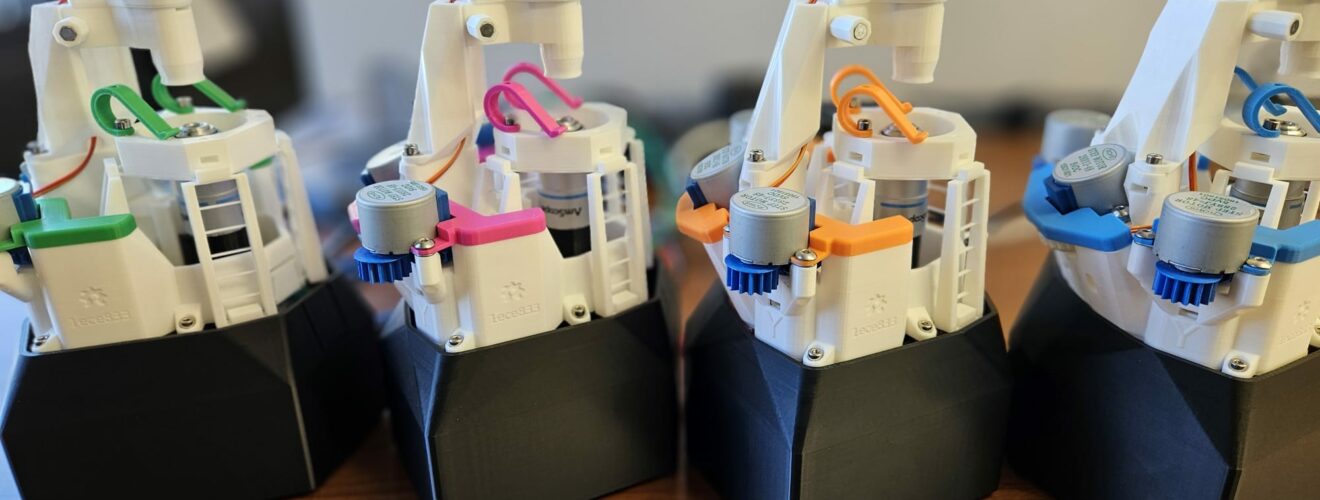
As the world shifts to an increasingly digital landscape, areas of the world can be left behind without access to required specialist equipment. Researchers at the University of Glasgow are addressing this divide by developing a 3D printed, lab grade microscope. The project demonstrates how open‐source technology can bridge gaps in access to the techniques required in medicine, education and research. Used in places as widespread as Antarctica, Tanzania, and Brazil, the microscope supports local research and healthcare initiatives, serving as a key tool in a range of environments.
A Glasgow base with global reach
The OpenFlexure Microscope began as an attempt to engineer an imaging device that could be easily reproduced and adapted. Richard Bowman introduced the design whilst at the University of Cambridge, and the project soon found a collaborative home at the University of Glasgow, where he is a Royal Society University Research Fellow and Proleptic Reader in Optics. Here, Richard forms part of a full-time team of four researchers who work to refine and expand the design. The community using and contributing to the microscope stretches far wider than Glasgow. On the OpenFlexure forum, people from over 60 countries have shared their experiences of using the OpenFlexure Microscope and how the project is supporting their work.
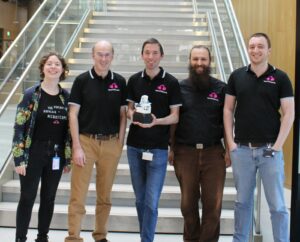
Some of the OpenFlexure Team at the University of Glasgow, including Freya Whiteford (L), Richard Bowman (Centre) and Joe Knapper (R).
At the University of Glasgow, the device forms part of current research projects and training programmes. PhD students Ben Chisholm and Freya Whiteford, who are working on extending the microscope’s capabilities, have been particularly active in exploring how new imaging and engineering techniques can be integrated into the existing design. Their contributions illustrate how the open-source model not only benefits global users but also provides valuable learning opportunities for local researchers.
“I’ve been using the OpenFlexure Microscope for outreach events in and around Glasgow.” explains Ben. “Our microscope is brilliant for teaching high school kids all about engineering and optics because they can see exactly how the parts come together and function. I’m planning a workshop for teachers around Glasgow to learn how to build, use and run their own workshops in their classrooms.”
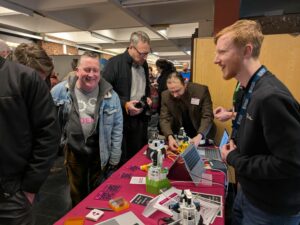
The OpenFlexure team at FOSDEM 2025, including Ben Chilsholm (R).
Making microscopy accessible doesn’t change the underlying physics theory, and is instead based on lowering high barriers to entry for microscopy. Freya explains, “My research is focused on integrating new imaging modalities to the OpenFlexure Microscope with a focus on laser scanning confocal imaging, which is traditionally bulky and reliant on high-end commercial suppliers. Because our microscope is portable and easy to replicate, I’ve been able to bring OpenFlexure to live demonstrations at conferences, and can easily collaborate with researchers in laboratories worldwide.”
The open-source advantage
At the heart of the OpenFlexure project is its open-source philosophy. By sharing the design details openly, the project invites a global community of contributors to suggest modifications, add new features, and even expand the device’s range of applications. The group is committed to not patenting or restricting access to the design, believing that their work will be most impactful if shared freely. This cooperative development model has led to modifications that include options for fluorescence imaging and even the integration of artificial intelligence to help with image analysis.
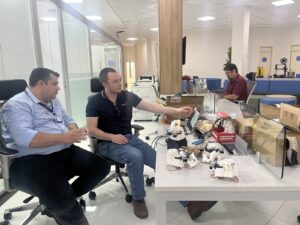
The OpenFlexure Microscope being used at a hospital in Barretos, Brazil.
A key benefit of the open-source approach is that it addresses a common problem in many under-resourced regions: the maintenance and long-term operation of technology. The World Health Organisation estimates that less than half of donated medical equipment in Sub-Saharan Africa ends up in use, partly due to a lack of local support for using and maintaining such complex devices. By contrast, the OpenFlexure project empowers local engineers and technicians to build, adapt, and repair their own equipment. This not only makes the devices more sustainable in the long term, but also helps build local capacity in engineering, business and medicine.
Enhancing access in healthcare and research
Access to reliable, high-performance microscopy is vital for diagnosing diseases and conducting research. In many parts of the world, conventional microscopes are prohibitively expensive to obtain, and often require specialised maintenance. The OpenFlexure Microscope, by contrast, is designed with accessibility in mind. In Tanzania, health professionals have used it to image malaria in blood, and the microscope is used in Brazil to image cancer. As a digital microscope, the OpenFlexure Microscope allows samples to be shared virtually, letting doctors consult remotely from anywhere in the world.
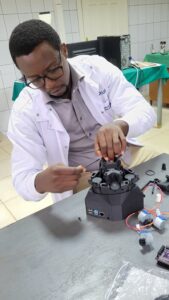
Doctors in Rwanda using the Microscope to diagnose malaria.
Medical students can also use the OpenFlexure Microscope to understand how their equipment works, and get trained on digital images of samples taken from their area, which reflect their future workload better than textbooks printed in other countries. As medicine continues to increasingly rely on AI for support, the OpenFlexure Microscope ensures these techniques are available everywhere, rather than limited to only the best funded hospitals in a few countries.
“We’re not claiming that we’ve built a microscope suitable for every hospital and lab in every country in the world – that’s impossible.” says Joe Knapper, an OpenFlexure core developer at the University of Glasgow. “But we’ve made sure that we’ve made a platform that can be adapted anywhere that it’s needed, by the people who understand their local challenges and opportunities. We support them to turn our designs into the microscope, translation stage or slide scanner they need, and then we see where it goes from there’
A flexible design
The microscope design relies on a 3D printed plastic, flexure-based mechanism to allow for precise sample positioning. The printers used by OpenFlexure are entry-grade; there’s no requirements for the top of the range equipment. The rest of the parts can be bought online from a range of places. All the stage control and image processing is done on a Raspberry Pi, the best selling British computer of all time. The lenses used are also standard, so there’s no custom parts that are hard to source.
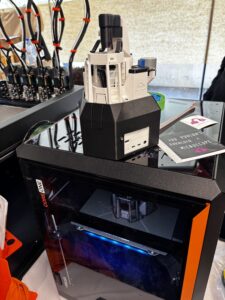
The Microscope’s stage is 3D printed.
Once the microscope is assembled, it uses the camera, Raspberry Pi and motors to self-calibrate the build. If there’s a problem with the mechanism or images, it can detect that automatically, so an imperfect microscope never gets used. Instead, it flags the issue to the user, letting them perform their own repairs. The microscope software, written in Python, performs the calibration, and also runs automated scanning and stitching of the sample, presenting the user with a 3D scan of their sample automatically.
Looking ahead: a future of continued collaboration
The work being done in Glasgow is part of a larger story—one where researchers, clinicians, and educators across the world are joining together to make scientific tools more accessible and effective. With a small but dedicated team at its core, and a global network of users improving and adapting the design, the OpenFlexure project reinforces the idea that local expertise can have a global impact. While the technology may have started in a laboratory, its principles of accessibility and collaboration have led to its use in rainforests, Antarctic ice, and even a zero-gravity parabolic flight.

The Microscope being used by Hannah Laeverenz-Schlogelhofer to study the Antarctic Sea Ice.
The impact of the project continues to grow within and outside academia, with the project team recently founding a charity to support the deployment of the microscopes where they’re needed. The Humanitarian Technology Trust (charity number 1212197) is working to ensure that the microscope can be produced and used wherever it’s needed, bringing cutting edge innovation from the University of Glasgow to areas that will most benefit.
For further reading:
- The OpenFlexure Project website: https://openflexure.org/
- The authors’ most recent paper on the medical use of the OpenFlexure Microscope: https://royalsocietypublishing.org/doi/10.1098/rsta.2023.0257
- The authors’ paper about the OpenFlexure Microscope: https://opg.optica.org/boe/fulltext.cfm?uri=boe-11-5-2447&id=429869
- The authors’ feature in the World Health Organisation’s 2024 Compendium of Innovative Healthcare Technologies for Low-Resource Settings (pp 69-71): https://iris.who.int/bitstream/handle/10665/378235/9789240095212-eng.pdf?sequence=1
Edited by Samiya Dash
Copy-edited by Bavishya Tata




